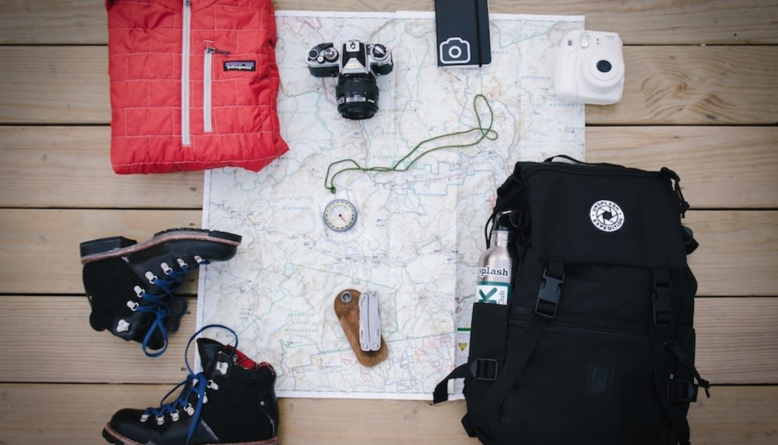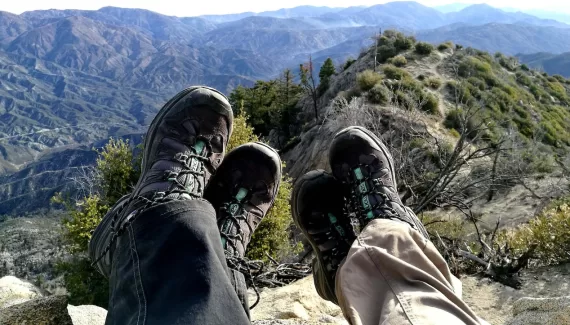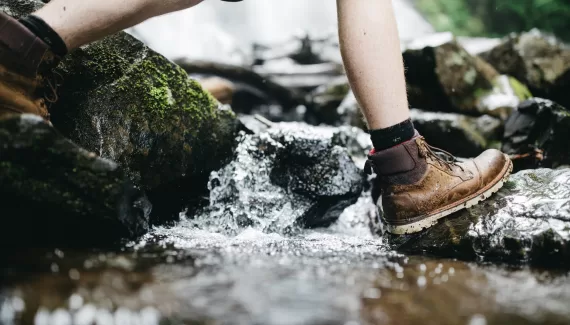As a beginner hiker, it’s essential to come prepared with the right gear and equipment. Hiking can be a challenging and unpredictable activity, and being properly equipped can make all the difference in your experience. In this article, I will guide you through the ten essentials for hiking, what to take on a hike, and where to find hiking supplies and equipment. By the end of this article, you’ll be ready to hit the trails with confidence and enjoy the great outdoors.
The 10 Essentials for Hiking Explained
The ten essentials for hiking are a list of items that every hiker should carry with them on every hike. They are essential for safety and survival in case of an emergency. Here are the ten essentials for hiking and why they are important:
- Navigation: A map and compass are essential for navigating trails, especially if you are hiking in an unfamiliar area. GPS devices are also useful but should not be relied upon entirely.
- Sun Protection: Sunscreen, sunglasses, and a hat are crucial for protecting your skin and eyes from the sun’s harmful rays.
- Insulation: Even on warm days, temperatures can drop quickly on trails, especially at higher elevations. Bring extra layers, such as a fleece or jacket, to stay warm.
- Illumination: A headlamp or flashlight is essential for navigating trails in low-light conditions or when hiking in the dark.
- First-Aid Supplies: Accidents can happen on the trail, and it’s important to be prepared. Bring a first-aid kit with bandages, antiseptic, and any necessary medication.
- Fire: A lighter or matches are necessary for starting a fire in case of an emergency or for cooking and staying warm.
- Repair Kit and Tools: Bring a multi-tool or knife, duct tape, and other repair items to fix gear or equipment.
- Nutrition: Bring plenty of food and snacks to keep your energy levels up during your hike.
- Hydration: Bring enough water and a water filtration system to stay hydrated during your hike.
- Emergency Shelter: A lightweight emergency shelter, such as a tent or bivy sack, is essential for staying warm and dry in case of an emergency.
Hiking Gear List: What to Take on a Hike
In addition to the ten essentials, there are several other items you should bring on your hike. Here is a list of what to take on a hike:
- Backpack: Choose a backpack that fits comfortably and has enough room for all your gear.
- Hiking Boots: Invest in a good pair of hiking boots that provide support and traction on the trail.
- Clothing: Bring clothing appropriate for the weather and activity level, including moisture-wicking layers, a rain jacket, and a hat.
- Trekking Poles: Trekking poles can help reduce strain on your knees and improve balance on uneven terrain.
- Camera: Don’t forget your camera to capture the beautiful scenery on your hike.
- Insect Repellent: Keep bugs at bay with insect repellent.
- Whistle: A whistle is essential for signaling for help in case of an emergency.
- Sunglasses: Protect your eyes from the sun’s harmful rays with sunglasses.
- Personal Locator Beacon: A personal locator beacon can signal for help in case of an emergency.
- Toilet Paper and Trowel: Leave no trace by bringing toilet paper and a trowel to bury waste.
Hiking Packing List: What to Bring Hiking
Now that you know what to take on a hike, it’s essential to know how to pack your gear efficiently. Here are some tips for packing for a hike:
- Start with the heaviest items at the bottom of your backpack.
- Use packing cubes or dry bags to organize your gear.
- Keep frequently used items, such as snacks and sunscreen, in an easily accessible pocket.
- Pack extra clothing in a waterproof bag to protect it from moisture.
- Secure trekking poles to your backpack with straps.
- Use compression sacks to compress bulky items, such as sleeping bags or jackets.
- Bring a trash bag to pack out all your trash.
Essential Hiking Gear for Day Hikes
For day hikes, you won’t need as much gear as for overnight trips. Here are some essential hiking gear for day hikes:
- Water Bottle or Hydration Pack: Bring enough water to stay hydrated during your hike.
- Snacks: Bring snacks to keep your energy levels up during your hike.
- Map and Compass: Even for day hikes, it’s important to know where you are going and how to get back.
- Sun Protection: Protect your skin and eyes from the sun’s harmful rays with sunscreen, sunglasses, and a hat.
- First-Aid Kit: Accidents can happen on the trail, even on day hikes. Bring a first-aid kit with bandages, antiseptic, and any necessary medication.
Related Article: Carry Your Load with Ease: Top-Rated Hiking Backpacks to Invest in Today
Hiking Necessities: What You Can’t Leave at Home
There are a few items that you should never leave at home when going on a hike. Here are some hiking necessities:
- Water: Bring enough water to stay hydrated during your hike.
- Food: Bring plenty of food and snacks to keep your energy levels up during your hike.
- Navigation: Bring a map and compass or GPS device to navigate the trails.
- Sun Protection: Protect your skin and eyes from the sun’s harmful rays with sunscreen, sunglasses, and a hat.
- First-Aid Kit: Accidents can happen on the trail, so be prepared with a first-aid kit.
Hiking Gear Essentials: Equipment for a Successful Hike
Investing in quality hiking gear can make all the difference in your hiking experience. Here are some hiking gear essentials:
- Hiking Boots: Invest in a good pair of hiking boots that provide support and traction on the trail.
- Backpack: Choose a backpack that fits comfortably and has enough room for all your gear.
- Trekking Poles: Trekking poles can help reduce strain on your knees and improve balance on uneven terrain.
- Headlamp or Flashlight: Illuminate the trail in low-light conditions with a headlamp or flashlight.
- Water Filtration System: Stay hydrated with a water filtration system, such as a water filter or purification tablets.
Hiking Checklist: A Step-by-Step Guide to Packing for a Hike
Packing for a hike can be overwhelming, especially for beginners. Here is a step-by-step guide to packing for a hike:
- Check the weather forecast and pack clothing appropriate for the weather.
- Make a list of the ten essentials and other necessary gear.
- Organize your gear into packing cubes or dry bags.
- Pack heavier items at the bottom of your backpack.
- Use compression sacks to compress bulky items.
- Secure trekking poles to your backpack with straps.
- Pack extra clothing in a waterproof bag.
- Bring a trash bag to pack out all your trash.
Where to Find Hiking Supplies and Equipment
There are several places to find hiking supplies and equipment, including:
- Outdoor Retailers: Visit a local outdoor retailer, such as REI or Bass Pro Shops, for a wide selection of hiking gear.
- Online Retailers: Online retailers, such as Amazon or Backcountry, offer a wide selection of hiking gear and equipment.
- Rental Shops: Rent gear, such as backpacks or trekking poles, from a local rental shop.
Conclusion: Be Prepared for Anything on Your Next Hike
Hiking can be a challenging and unpredictable activity, but with the right gear and equipment, you can enjoy the great outdoors with confidence. Remember to pack the ten essentials, bring appropriate clothing and footwear, and stay hydrated and nourished during your hike. By following this guide, you’ll be prepared for anything on your next hiking adventure.
Related Article: Pack Your Bags and Go: Affordable Hiking Backpacks That Won’t Break the Bank
CTA: Whether you’re a beginner or a seasoned hiker, it’s important to have the right gear and equipment for a successful hike. Invest in quality gear, pack efficiently, and stay prepared for anything on the trail. Happy hiking!



No Responses Yet